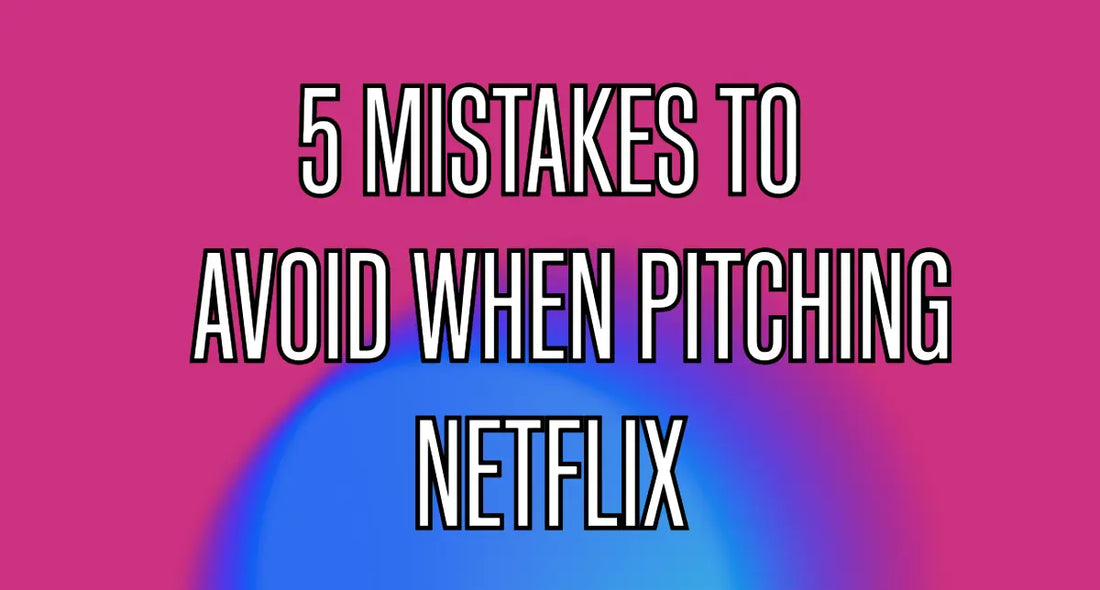
5 Mistakes to Avoid When Pitching to Netflix
Share
The dream of hearing your music on a global Netflix series is a powerful motivator for countless artists and composers. Netflix, as a titan in content production, offers unparalleled exposure and prestige. However, the path to getting your music placed isn't as simple as hitting "send" on an email to a general inbox. It requires strategy, professionalism, and a keen understanding of the industry's gatekeepers.
Many aspiring sync artists make common, yet avoidable, mistakes that can instantly derail their chances. To truly stand out, you need to know not just what to do, but what not to do.
Mistake #1: Pitching Directly to Netflix (The Wrong Way)
The most common question we hear is, "How do I submit my music to Netflix?" The answer is: You generally don't, at least not directly through an unsolicited email to their corporate address.
Netflix, like most major studios and production companies, does not accept unsolicited music submissions for legal and logistical reasons. They work with established networks of music supervisors, music libraries, publishers, and labels. Sending a random email to a Netflix contact you found online will, at best, be ignored, and at worst, brand you as unprofessional.
- Instead, focus on: Building relationships with music supervisors who work on Netflix projects, getting your music into reputable music libraries that have existing deals with Netflix productions, or working with a publisher/sync agent who has those connections. These are the actual gatekeepers.
Mistake #2: Not Understanding the Project's Needs
A blanket email with a link to your entire discography is a guaranteed way to get overlooked. Music supervisors are working on specific projects with very particular needs. They're looking for music that fits a scene's mood, era, tempo, and lyrical content (or lack thereof).
- Instead, focus on: Research. If you're pitching to a music supervisor known for a specific Netflix show, watch that show! Understand its sonic identity. Tailor your pitch to the specific project you believe your music would enhance. If pitching to a library, understand the genres and moods they specialize in. Never send music that doesn't fit the brief.
Mistake #3: Neglecting Metadata and File Organization
You've landed the attention of a supervisor or library, they love your track, and they need it now. If your files aren't perfectly organized and tagged, you've created a headache. Missing metadata (artist, title, genre, mood, tempo, keywords), poorly named files, or incorrect file formats (e.g., MP3 instead of WAV for initial submission) can be a deal-breaker.
-
Instead, focus on: Being sync-ready. Every track should have impeccable metadata embedded. Your files should be clearly named (e.g.,
ArtistName_TrackTitle_Instrumental_WAV.wav). Have stems and alternate mixes (instrumental, no-lead-vocal) readily available. A supervisor's time is precious; make their job easy.
Mistake #4: Lacking a Professional Presentation (Website, EPK, Streamlined Links)
Your "pitch" extends beyond the email. Your website, Electronic Press Kit (EPK), and even your social media presence are all part of your professional package. If a supervisor clicks a link in your email and lands on an unorganized, outdated, or difficult-to-navigate page, they'll move on.
-
Instead, focus on: A clean, professional online presence. Your website should be easy to navigate, with a dedicated "Sync" section that clearly outlines your offerings (one-stop, stems available, genres). Use streamlined, curated links (e.g., a private Soundcloud playlist, a dedicated sync page on your site) rather than directing them to a general Spotify profile where they have to hunt for the right track. Quality over quantity.
Mistake #5: Giving Up Too Soon or Taking Rejection Personally
The sync world, especially with major players like Netflix, is incredibly competitive. You will face rejection, or more often, silence. It's not a reflection of your talent; it's a reflection of the sheer volume of music and the highly specific needs of each project. Giving up after a few attempts is the biggest mistake you can make.
-
Instead, focus on: Persistence and continuous improvement. Treat every pitch as a learning opportunity. Refine your music, your metadata, your pitch emails, and your understanding of the industry. Network consistently. The composers who succeed are those who are resilient and adapt. It's a marathon, not a sprint.
In Conclusion
Getting your music placed on Netflix is an ambitious, but achievable, goal. By avoiding these common pitfalls and adopting a professional, strategic approach, you significantly increase your chances of connecting with the right people and ultimately, hearing your music on the biggest streaming platform in the world.
Need help finding background music that boosts engagement? 🎧 Explore our licensing catalog or work with Playbutton Media to get custom-curated music tailored to your content goals
